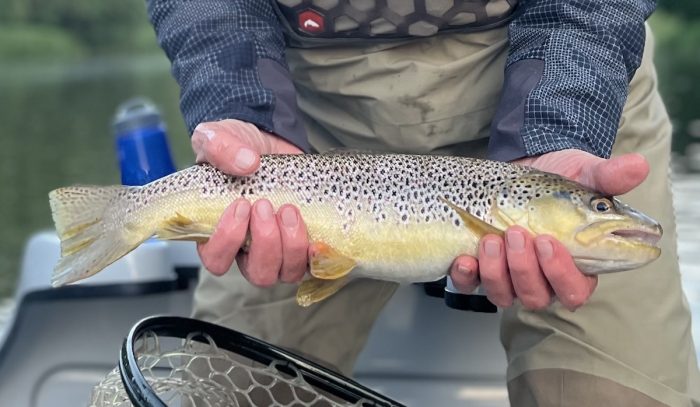Fly Fisher Fitness Adventures, welcome! This is where we will share adventures–out flyfishing, putting the fitness we build throughout the year into practice. We fly fish long and hard, dark to dark usually without incident highlighting the freedom and wealth of Fly Fisher Fitness.
Getting in the best shape of you life is a must. We will provide tips, suggestions, pitfalls and best practices to support your flyfishing addiction on this page. As I have mentioned, I am here to help you discover the wealth that fitness offers. I can’t make you fit. But I can guarantee you know all that is needed to keep yourself fit. With no back pain, increased stamina and improved balance, you’ll be flyfishing harder for longer and with vigor until………… There is no upper limit, no one knows what you are capable of. Limitless adventures!
Adventures 2025
Steelhead season is usually cold and unpredictable, 2025 was no exception. Getting in and out of a drift-boat midstream, wading, functioning and maneuvering (all day) requires a high level of fitness and stamina. Hardy thermoregulation is essential. Conneaut Creek water temperature was 38° and the air temp was not much higher. Massive ice sheets on Lake Erie influenced the microclimate.
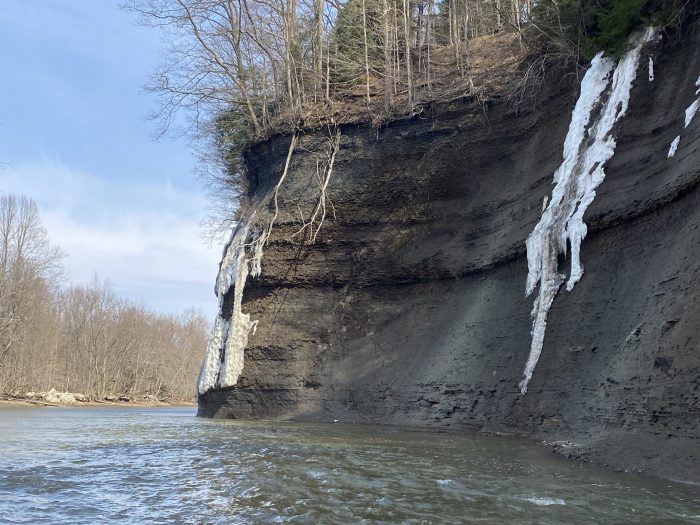
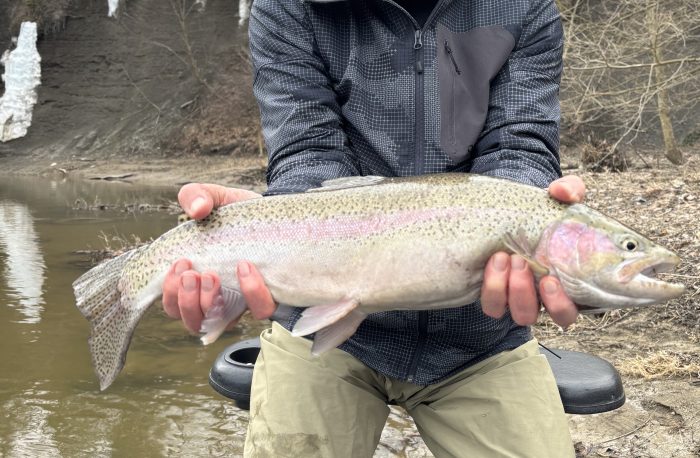

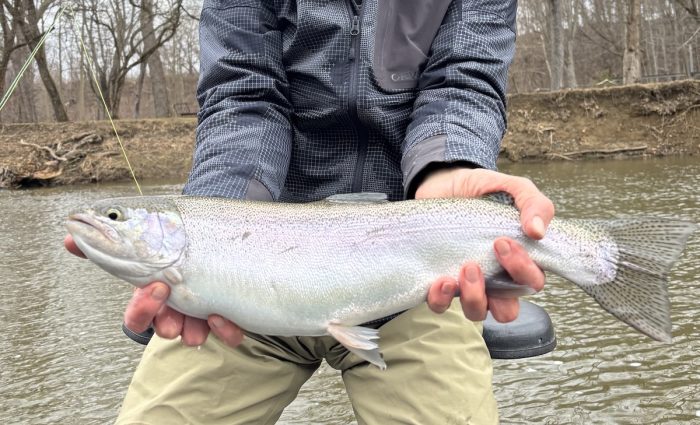
Adventures 2025, Early Trout
The fish were not interested in playing. Our group tried everything and only a few fish were caught. But, as I always say, it’s more than flyfishing. Getting outdoors, communing with the wilds never disappoints.
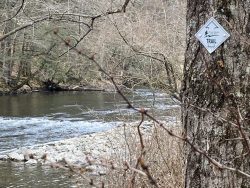
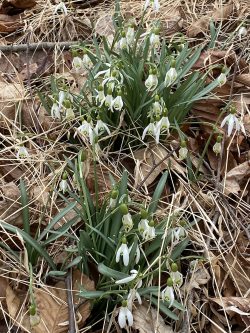
Galanthus nivalis, snowdrop, a garden escapee and one of the first bulbs to flower in the spring, March in this case.

You never know how Nature will reward you for communing!
Adventures April/May 2024
Fly fisher Fitness adventures, putting fitness into practice—April and early May (2024) trout outings. We had pleasant weather, fun flyfishing buddies and, of course, the water. Where would we be without the water?
The Kettle Creek adventure is freestone heaven. A semi-wilderness area where you can still see bears with cubs crossing the road, elk and bald eagles, too. Thanks to state forests and parks! These agencies need our support—even if it’s just a shout out! The agencies that manage state forests and parks are under-funded, and the workers receive low pay. But you don’t do this kind of work for the money.
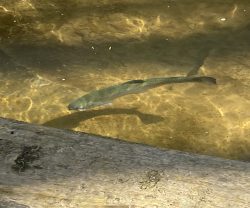
Little Kettle Creek Trout
Freedom
The best gear and the best flies inspire confidence. But the rock solid apex of confidence is fly fisher fitness. Its wealth beyond mere equipment. It gives you freedom. You can hike anywhere, in all conditions, climb over anything and practice getting better at flyfishing with complete focus on the water and the fish.
If you are strong, fit and flexible, you can forget about life for a while and freely embed yourself in Nature. If you require consistent smartphone service, avoid this semi-wilderness adventure paradise!
Kettle Creek Lodge, in the village of Oleona, offers top-notch fly-fisher accommodations.
We arrived too late in the day for a major outing, but a short hike into the gorge to Little Kettle Creek and boom, jolting strikes and fish in the net!
The next day we fished the Flyfishing Only—Catch and Release portion of Kettle Creek, and it too was clear and plentiful with trout. Fish took prince nymph, pheasant-tail, blue-wing olive wet fly and black ant wet fly. There are no houses. No cars buzzing by. You can marinade in the solitude of flyfishing in a semi-wilderness.
We also fished Pine Creek at Slate Run—a Class-A native brook and wild brown trout water. Big water. Three days wasn’t enough, we’ll have to go back.
Adventures-Yellow Breeches
Later in the month we fished Yellow Breeches. A heavily stocked, easily accessible stream near the town of Boiling Springs, PA. Recently, they restored the cold-water feed that ‘boils’ up in the lake near the TCO Fly Shop. A new bridge that encloses the lake along redirects the cold, gin-clear feed (called the Run), creating a permanent habitat improvement for the Breeches.
One day of our trip it was sunny and 85°. Not too hot for trout in the water because I hiked the path from Allenberry upstream and fished the Run.
Beware as you hike. There are snakes along the trail, mostly harmless northern water snakes (I saw and positively identified two). There is the slight possibility of seeing a venomous copperhead. They like water and hang around trails waiting for an unsuspecting frog or turtle to cross. But there are less of them and they are more afraid of you than you should be of them. The best defense is awareness, you seeing it first. Use your wading staff to rustle the grass ahead of where you walk and wearing waders is protective. On a previous trip, a friend was startled by a northern water snake, jumped and contorted himself (in full gear) and injured his back. That’s the thing about flyfishing. A crisis finds you as you are, not as you wish you were. Nature’s hazards have a way of finding our weak areas; not as we wish we were but as we are in the moment. Are you prepared?
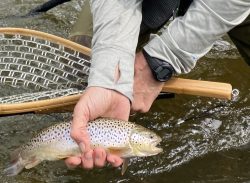
Breeches fatty

A double at the Breeches
Even in the most easily accessed areas, we need to be fit, flexible and aware. Nature is hazardous. But if you are in condition, you are prepared at a foundational level and you can rely on your physicality to keep you injury free and out of trouble. If not, be aware that we are all getting older (and weaker). The time to keep that ‘getting in shape’ promise to yourself is now.
See the Run at Boiling Springs.
On this trip, I saw two guys fall in the water. The rocks are slippery, the current pulls you off balance and stepping up and out of wading on to a bank is challenging. You’ll need everything you’ve got. I used my staff and all my strength, coordination and stamina to climb out of a deep, slippery hole that pulled me downstream as I fought to get on the bank. If I hadn’t been in condition, I would have went down.
Fishing the Run, I hid, wore dark green/gray and kept a low profile. And in that gin-clear, cold water, bingo. Some of the stealthiest fish took my (non-expert) presentation of prince and hare’s ear nymphs. Being in condition allowed me to hike to the area, climb around and fish with cagey finesse.
Repair and renewal happens when my head hits the pillow.
See you on the water!
May/June 2024 Upper Delaware River Adventure
The Upper Delaware River System is a true gem, an ecosystem unlike any other. It’s not better than other fishing areas, just unique. Its significance for modern-life, complexity and beauty run deep and long. The New York City water supply machine can make fishing tricky, but we are called to accept and adapt to reality (modernity). The best thing for us outdoor types is to think big-picture, appreciate and treasure what we have.
A four-day, mid-week adventure, where the East and West Branches of the Delaware River converge in early June, is well timed because the bouts of rain have settled. The only things to contend with are chill a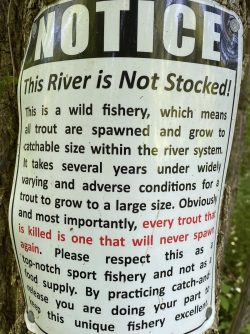 nd the wind.
nd the wind.
Nymphing in the day and ‘dry flying’ in the evenings during the week was solitary paradise, nirvana. To duplicate this on the weekend, one had to wade beyond the parking lot trail. This involves field application of the fitness we’ve been steadily building. Sturdiness, stamina, strength and endurance will take you away from the crowds, into solitude. Finding pools and seams are a sure thing but fish are another matter.
The fish are there but their aloof. People say these wild trout have PhDs but they’re wild. Catching wild fish is more of a challenge that the usual, pedestrian, hatchery-raised trout. Any wild animal is savvy, aware and overly cautious. Just like wild pheasants in the Dakotas. My friends were perplexed when we hunted in South Dakota (where I lived for a time) and most ring-necks ran (way ahead of the dogs) rather than flush.
For the wild trout, keep moving around, changing flies and tactics and when you succeed, you’ll have a hefty trout that may snap your line, pull itself free a with frenzied fight or you will net the wild beast.
Adventures-Hiking in Waders
With or without fish, the wade-hike is a naturalist’s adventure at every turn. That’s what the high-tech, lightweight, backpacking-style waders are designed for. Those of us who remain in condition to hike in water from ankle to waist deep seeking solitude and natural beauty.
As a retired wildlife biologist, I’m drawn to hiking in waders and exploring rivers and surrounding marshes and wetlands. I usually find something and, on this trip, I found lampreys. I watched as they hollowed out depressions in the river (engineering nests). Eventually, the female lays eggs while the male looks on. Here’s a video of one active lamprey nest I found.
Lampreys, sea lampreys in this case, are jawless parasites. An ancient—before dinosaurs, primitive vertebrate with a cartilaginous skeleton like sharks. They have changed little. Fossil lamprey that are 360+ million years old look like what we see today.
In its original, native habitats, the sea lamprey co-evolved with its hosts. That means the hosts have developed some resistance to their parasitic sucking. In native habitats, hosts do not die from the parasitic draw of blood and muscle. However, sea lampreys cause problems in the Great Lakes by invading areas where they were not native and hosts had no co-evolution adaptations. Escapee species are a continuous problem for ecosystems.
They may not look pretty, but they play a valuable role in the Delaware River ecosystem. First off, they do not attach or feed on the wild trout in the Delaware River system. Sea lampreys, like salmon, are anadromous. They begin life in fresh water as filter-feeding ammocoetes (larvae), swim to the ocean, mature into adults where they find large hosts to exploit and then return to gravel bottomed freshwater streams to spawn. After which, the adults die.
They benefit the ecosystem with their nest-building. Trout use sea lamprey nests to spawn. Their filter-feeding larvae embed in the silt and filter and clean the water like oysters. They are only parasitic in the ocean.
So, the sea lamprey is a keystone species. In wildlife biology, a keystone species influences the ecological community. They help engineer and create opportunities for other species in the ecological community. A beaver, for example, creates habitat that serves many other species, helps prevent floods and enhances biodiversity. The sea lamprey uses their strong sucking mouth to move rocks and engineer nests that are used by wild trout. And their filter-feeding larvae help clean freshwater habitats.
More Naturalist Adventures & Discoveries
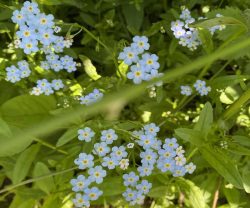
Boraginaceae family, true forget-me-not

Caryophyllaceae Family,Ragged Robin
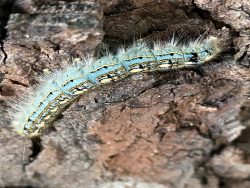
Forest tent caterpillar
See you on the water.

